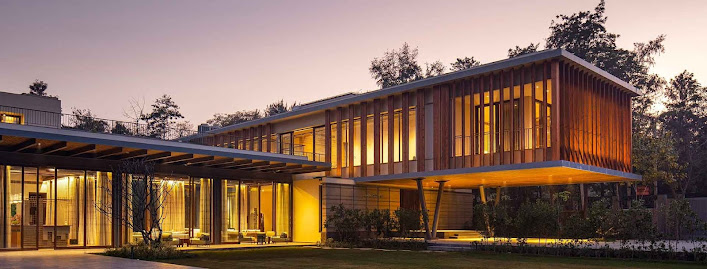7 Ways That Interior Design Influences Your Mood
Interior design goes beyond aesthetics; it has a profound impact on our emotions and well-being. The colors, textures, and layout of our living spaces can significantly influence our mood and overall sense of comfort. In this blog, we explore seven ways in which interior design directly affects our emotions, highlighting the importance of creating harmonious and nurturing environments. Studio Lotus is widely recognized as one of the top interior design firms in India, renowned for their exceptional creativity and holistic approach. With a commitment to sustainability and a deep understanding of Indian culture, Studio Lotus has crafted remarkable spaces that seamlessly blend tradition and modernity.
Color Psychology: A Palette of Emotions:
Colors have the power to evoke specific emotions and set the tone of a space. Warm hues like red and orange can stimulate energy and passion, while cool tones like blue and green promote calmness and tranquility. Carefully chosen color schemes can uplift our spirits, foster creativity, or create a soothing atmosphere, depending on the desired effect. Understanding color psychology allows interior designers to create spaces that elicit specific emotional responses.
Lighting: Illuminating the Mood:
Lighting plays a vital role in shaping our emotions and perception of a space. Natural light promotes a sense of vitality and connection to the outdoors, enhancing moods and increasing productivity. On the other hand, dimmed lighting can create a cozy and intimate ambiance, perfect for relaxation. Properly layered lighting design, including task lighting, ambient lighting, and accent lighting, allows for versatility, adapting to different activities and moods throughout the day.
Spatial Layout: Flow and Well-being:
The arrangement and flow of furniture and objects within a space greatly influence our sense of well-being. A well-designed layout promotes ease of movement and functionality, reducing stress and enhancing productivity. Open floor plans encourage social interaction and create a sense of spaciousness, while cozy nooks and defined zones offer privacy and relaxation. Thoughtful consideration of spatial layout enhances the overall comfort and positive experience within a room.
Texture and Materiality: Tactile Comfort :
The textures and materials chosen for surfaces, furnishings, and accessories have a tactile impact on our emotions. Soft and plush materials, such as velvet or faux fur, evoke a sense of coziness and comfort. Smooth and sleek surfaces, like polished metal or glass, can convey modernity and sophistication. Incorporating a variety of textures creates visual interest and engages our sense of touch, adding depth and personality to a space.
Nature and Biophilic Design: Bringing the Outdoors In:
Our innate connection to nature makes it a powerful element in interior design. Incorporating natural elements, such as plants, natural materials, and views of green spaces, can promote relaxation and reduce stress. Biophilic design taps into our instinctive affinity for the natural world, providing benefits like improved air quality, increased focus, and a sense of well-being. Access to natural light and views of nature have been shown to positively impact mood and productivity.
Organization and Clutter-Free Spaces: Mental Serenity :
A cluttered and disorganized environment can contribute to feelings of anxiety and restlessness. On the other hand, well-organized spaces promote mental clarity and a sense of serenity. Implementing storage solutions, decluttering, and maintaining a clean and tidy environment can greatly impact our mood and overall well-being. Clear surfaces and uncluttered spaces allow for better focus, creativity, and a greater sense of calm. We create meaningful experiences in hospitality to address the emerging needs of the most discerning user by consistently applying our understanding of the context, local materials & techniques, authentic luxury and the brand narrative. Looking for top architecture companies in India who can create thriving future homes, Studio Lotus - Top Architecture Companies in India constantly improving the designs and ability.
Decorative elements that hold personal meaning and reflect our values and experiences can have a profound impact on our emotional state. Displaying cherished mementos, artwork, or photographs evokes positive emotions and fosters a sense of identity and belonging. Meaningful decor items can create.



Comments
Post a Comment